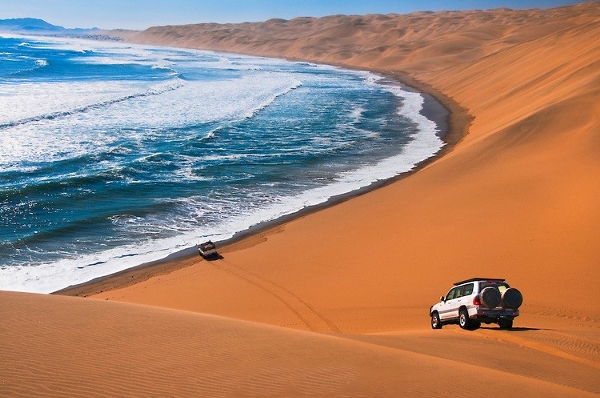Like this article?
Go on, give it a kudu!

Published on June 27 2013
Written by:
Stefan Jeriga
1122 views
In 2007, Namibia got its first World Cultural Heritage: the Rock Carvings of Twyfelfontein.
In June 2013 the UNESCO decided to add a second one: The Namib Sand Sea.
On its homepage the UNESCO states: “Namib Sand Sea is the only coastal desert in the world that includes extensive dune fields influenced by fog. Covering an area of over three million hectares and a buffer zone of 899,500 hectares, the site is composed of two dune systems, an ancient semi-consolidated one overlain by a younger active one. The desert dunes are formed by the transportation of materials thousands of kilometres from the hinterland, that are carried by river, ocean current and wind. It features gravel plains, coastal flats, rocky hills, inselbergs within the sand sea, a coastal lagoon and ephemeral rivers, resulting in a landscape of exceptional beauty. Fog is the primary source of water in the site, accounting for a unique environment in which endemic invertebrates, reptiles and mammals adapt to an ever-changing variety of microhabitats and ecological niches.” (http://whc.unesco.org/en/list/1430/)
History:
This area is part of the Naukluft Park, a protected area first proclaimed in 1907. “Namib-Naukluft National Park” was expanded until 1986 when it reached its largest size: 49,768 km2 – a size larger than Switzerland.
Tourism:
This truly remarkable area attracts geographers, ecologists, hikers and tourists. On a larger scale, flights and balloon trips provide breathtaking views of the beautiful natural formations of dunes and mountains.
How to get there:
Access from the northern side is via Swakopmund or Walvis Bay. But the most popular access to the park is at Sesriem ans Sossusvlei further south, which can be accessed from Windhoek in a day.
Most roads in the park are gravel, though normally navigable in a 2WD. The exception is the roads around Groot Tinkas and Gemsbokwater campsites, which require a 4WD. Permits are not necessary for visitors travelling on the public roads through the park. Should there be a need for a permit, you will be informed and get the permit at all the gates. MET offices in Swakopmund or Windhoek also help you with the permits and the planning.
UNESCO site (http://whc.unesco.org/en/list/1430/)
Has been on: 10 safaris
since 2009 in Namibia & owner of Omaruru Guesthouse
© Your African Safari Ltd, All rights reserved.
Your African Safari is a safari-planning and safari review site. It was created to help support a healthy African wildlife population. All reviews are vetted before being approved and only ethical tours are published